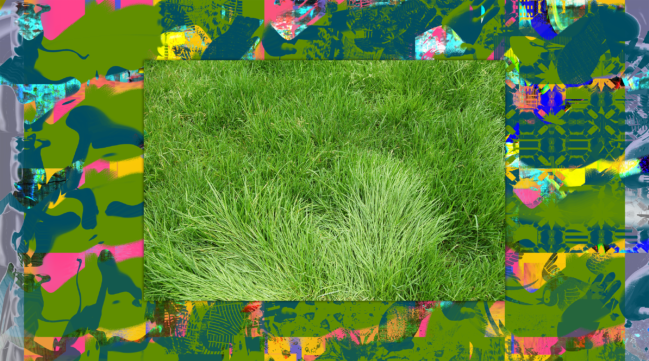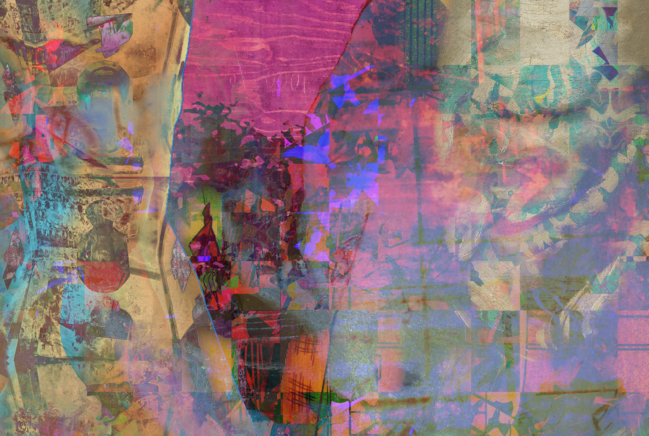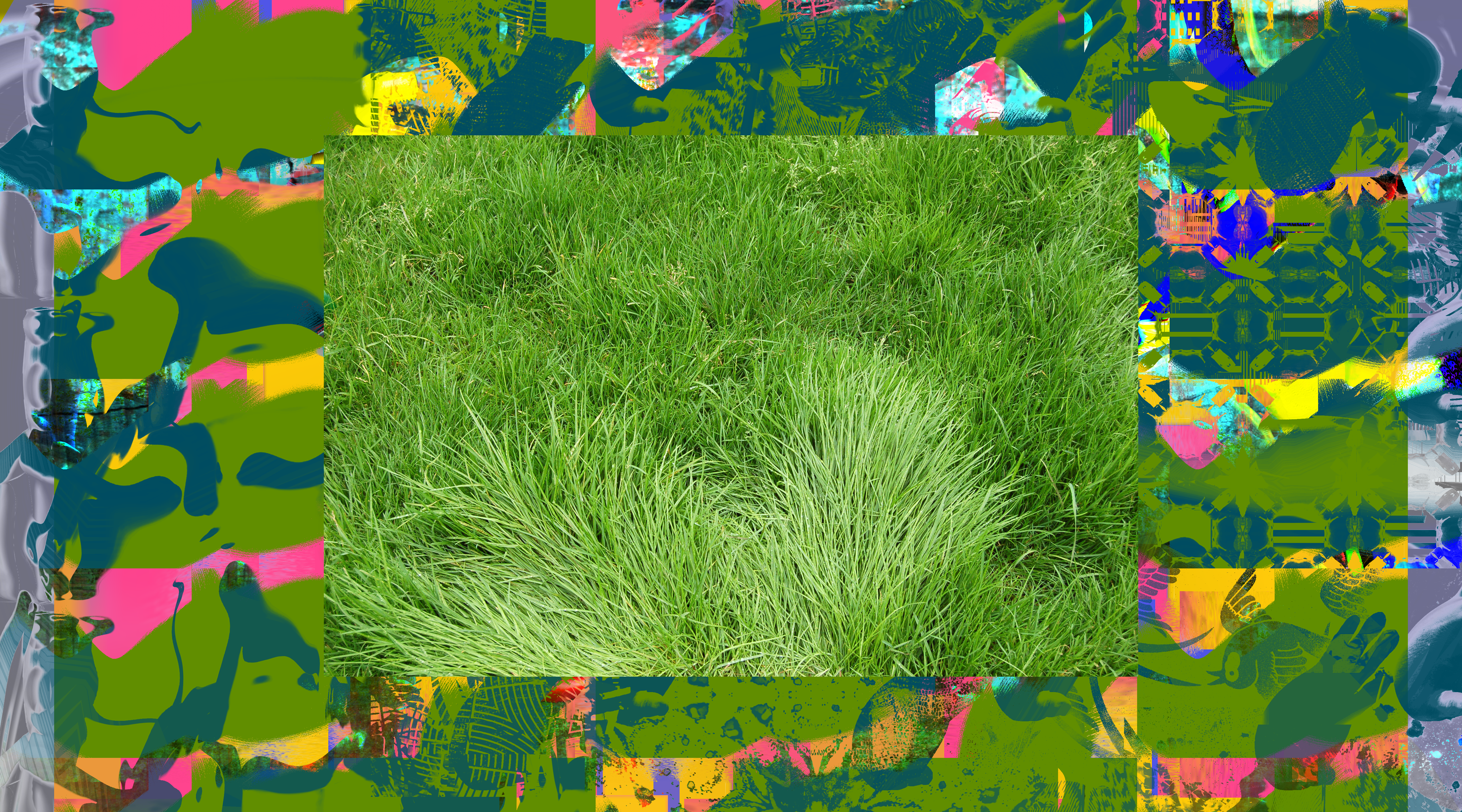Art for Non-Artists


Borders. In the Color Studies you see maybe a parrot, a patch of grass. A chair, a boat, a moustache. No ambiguity as to what’s what. These works need to firmly make a point. Get it? This photo of grass works with a completely unrelated pattern. Because? Because you can see with your own eyes, darn it.
See? The art takes the witness stand and doesn’t mumble. I want to prove to you that every image is valid to use when the final composition clicks.
Painterly is a word I want to use with Layerworks. If you’re not an artist you may not be able to get your teeth into it. Another gassy word. But let me fill it in for you.
Leonardo da Vinci was a famed master at building up layers of tone that finally told as living skin. About 500 years have glided away since. Few artists value the intense layering that gives you realistic skin. That’s been done. Today’s artists, preferring not to be fossilized, tune into their own times which stir in their souls. Oil paint was for centuries the preferred way to build layers of effects.
Now in digital art we speak of layer blending modes. With these we accomplish what Leonardo learned to do with oil paint. To pile one translucent effect over another. Here we use computer analysis instead of oil medium to make the layers marry. I use already-completed images as my layers. Wouldn’t have to. (Which gives me a new idea.) If you think of a digital canvas as a strict grid of pixels then two same-sized artworks will respond in a specified way pixel-by-pixel-by-pixel across your expanse. If a green pixel sits directly under a red one what color will ensue depends on which blending mode you choose. Two examples are:
Overlay: Multiplies or screens the colors, depending on the base color. Patterns or colors overlay the existing pixels while preserving the highlights and shadows of the base color. The base color is not replaced, but mixed with the blend color to reflect the lightness or darkness of the original color.
Soft Light: Darkens or lightens the colors, depending on the blend color. The effect is similar to shining a diffused spotlight on the image. If the blend color (light source) is lighter than 50% gray, the image is lightened as if it were dodged. If the blend color is darker than 50% gray, the image is darkened as if it were burned in. Painting with pure black or white produces a distinctly darker or lighter area, but does not result in pure black or white.
Painterly works in paint are more voluptuous, they revel in their ingredients — which may include a newspaper clipping, a scraping of rust. Painterly in paint implies freedom at the shoulder, imprecision, derring-do. A blind faith in process that a stillife master can’t afford. The more realistic, the more movement gets controlled at the wrist. Digital art relies on the wrist but often wishes to appear swash-buckling. A challenge many digital artists must somehow address.
Layerworks are immediately more abstract than Color Studies. The borders of this and that melt, others merge, and what matters is effects and quirks of color, of your sense of solidity or mist. Or sharp out-jags, slow blurs. The need to name an image in either layer disappears. Like all abstractions, the viewer addressed is in your gut, not in your reasoning.
Leonardo consciously chose the sequence of his layered effects. But you can’t intend your way into a Layerwork. At least not me. The factors are way to complex. I try a version of a Layerwork and wait to see whether it connects somewhere in me. If not, I try something else. Or I save that version and take another stab at it. Get maybe another winning version. Or not.
A learned art conservator might be able to distinguish between da Vinci’s painted layers but Jane Blow won’t. Yet when Anselm Kiefer shows a painting with straw or doll clothes attached to the canvas Jane Blow can’t not see it. How she sees will be 500 years different from how a Leonardo patron would have.

